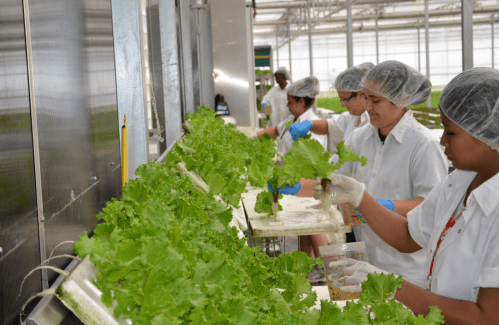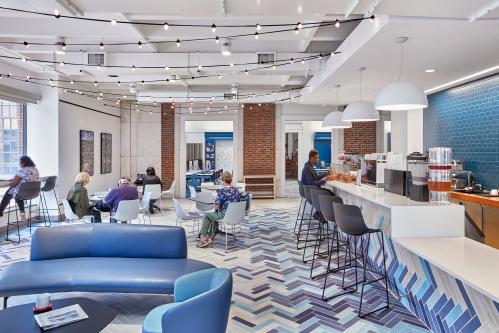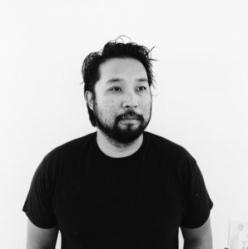Placemaking Postcards is a blog series from the Bass Center for Transformative Placemaking at Brookings where policymakers and practitioners guest-author promising placemaking efforts from across the U.S. and abroad that foster connected, vibrant, and inclusive communities. In line with the principle tenets of placemaking, the goal of the series is to recognize the community as the expert, highlight voices from the field, and to create a community of learning and practice around transformative placemaking.
Beginning in the early days of the COVID-19 pandemic and continuing in the 10 months since, media outlets have churned out a steady dose of conjecture about the “end” of cities, the unknown future of the urban public realm, and the fate of previously vibrant public places and districts in cities across the nation.
Meanwhile, placemakers, practitioners, and planners have pivoted their work to drive home an often-underappreciated reality: Urban places are not, in fact, destined for decline, and our cities’ public spaces, commercial districts, and other place-based assets will be driving forces in economic recovery.
One model initiative from Baltimore demonstrates this reality by showing how even during the height of pandemic-induced lockdowns and unfounded fears of urban density, coordinated efforts to support an activated urban public realm and vibrant commercial districts can co-exist with public health best practices and inspire more flexible innovations within our nation’s cityscapes for years to come.
Innovative designs to spur economic recovery
This May, when stay-at-home orders were still in place and small businesses were uncertain about how to reopen, the city of Baltimore made a $1.5 million investment to help small businesses open without compromising public health. They chose to make this investment in a tactical urban design initiative: Design for Distancing.
Launched as partnership between the city, the Neighborhood Design Center, the Baltimore Development Corporation, and John Hopkins Bloomberg School of Public Health, Design for Distancing included two components. First, it sponsored a design competition seeking innovative ways to reconfigure public spaces to help small businesses reopen and adapt to physical distancing requirements. Second, it launched a pilot initiative to implement winning designs in Baltimore commercial districts and embed public health best practices within the city’s urban landscape to support economic recovery at large.
Of 162 submissions to the competition, 10 designs were selected and published in the Design for Distancing Ideas Guidebook. The city then paired winning local design-build teams with Baltimore districts to scope and implement the interventions. Design teams received stipends for their work and districts received up to $100,000 in financial support for implementation.
Using ‘distancing’ to bring districts together
Our team—comprised of PI.Kl Studio, Bromo Arts and Entertainment District, and the Market Center Merchants Association—convened in May to figure out how to put the Design for Distancing initiative into practice in our districts. But first, we had to answer a critical question: How can we best leverage the public realm around us—streets, vacant lots, public spaces—as well as the new investment provided by the initiative to ensure small businesses and residents not only survive the COVID-19 economic crisis, but emerge stronger and more connected at the end of it?
We faced some implementation barriers from the outset. First, our team represents not one, but two distinct districts that share overlapping geographic boundaries. One district, Market Center, is home to 250 small businesses, including mom-and-pop shops, business and professional services, and restaurants—over 90% of which are locally owned and over 75% minority-owned. The other, Bromo Arts and Entertainment District, consists of more than 30 galleries, music venues, and theaters that serve artists and employ approximately 500 individuals in the industry. Within a mile surrounding the two districts, there is a growing residential population (approximately 42,000) with limited access to green space. We knew that our design had to benefit the many small businesses, artists, and residents spanning both districts.
This prerequisite brought about another challenge, this time related to the built environment. Together, the two districts encompass a large geographical area home to busy thoroughfares, hospitals, and a fire station that bring loud sirens, as well as a dispersed geography of small businesses, galleries, and venues. Given this vast urban landscape, we knew that our businesses, artists, and residents could not all benefit from localized streeteries or parklets concentrated in front of a handful of businesses. We needed to think bigger to ensure accessibility and provide benefits to everyone across a large and varied district.
Working closely together and with small business owners within the district, our three organizations came up with “the Meadow”: an expansive green public space in a vacant lot situated squarely in the middle of the two districts. Our design envisioned a welcoming, grassy, and natural place for customers to eat takeout, for small businesses to host pop-ups, and for residents to gather and possibly even hold safely distanced events. The Meadow features 20 small picnic tables and additional seating, shade sails, lighting, a shipping container for storage and branding, and wildflowers designed in a way to create outdoor “rooms.” It was designed to bring the two districts together—physically and socially—amid crisis.
Connecting people to the site, to small businesses, and to each other
Coming up with the design for the Meadow was just the first step. Next, we had to construct it, foster community investment in it, and physically connect people to it. In August, we enlisted a team of volunteers—including local artists, small business owners, residents, and other makers from the districts—to collectively build and bring the site to life. This collaborative process fostered a sense of community attachment to and investment in the new space. The Meadow was not just built for the community, but by the community.
Next, we had to ensure people could get to and from the site (which had long been vacant) and, most importantly, engage with small businesses along the way. To this end, we came up with a wayfinding campaign called “Thrive,” in which local artists produced sidewalk artwork to physically connect the two districts.
The Meadow and Thrive have since been integrated into the urban fabric of each district, bringing new people, customers, and entrepreneurs into the space even as the weather has turned colder. And although the design was meant to be temporary, we hope to make the Meadow a permanent fixture in community life.


A crisis response that can enhance our cityscapes
The Meadow was one of 10 projects selected to bring new life to Baltimore’s commercial districts amid the acute economic hardship of COVID-19. And the Design for Distancing initiative is just one of many examples of urban resilience unfolding across the nation, demonstrating the vast potential of our cityscapes to promote economic recovery and equitable growth.
Initiatives like these, forged amid crisis, show how new city infrastructure can lead to lasting changes in how we utilize the public realm around us. They can better connect people to each other, to their community, and to the small businesses that form the backbone of our local economies—during the pandemic and long after.
The Brookings Institution is committed to quality, independence, and impact.
We are supported by a diverse array of funders. In line with our values and policies, each Brookings publication represents the sole views of its author(s).













Commentary
How a Baltimore design initiative is rethinking cityscapes to promote economic recovery from COVID-19
January 12, 2021